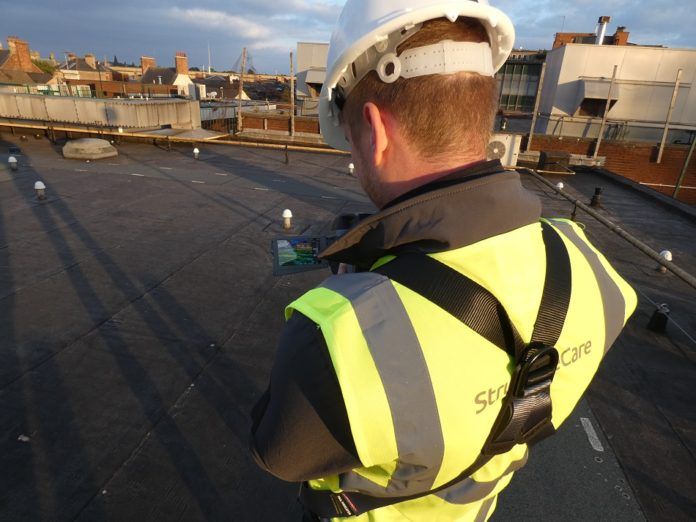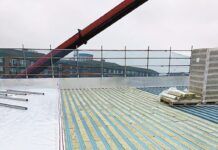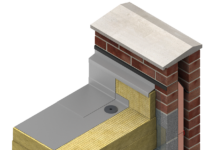Technology brought to the industry through StructureCare’s technical team gives main contractors and building owners the opportunity to see the unseen within roofing structures.
A member of CPG Europe, StructureCare now utilises sophisticated thermographic imagery to identify issues within roofing structures.
Working closely with US sister company, Weatherproofing Technologies Inc. (WTI), StructureCare has invested in state-of-the art ‘midwave’ cameras rather than the more conventional longwave cameras. The midwave cameras are much more accurate and enable StructureCare to carry out precise leak detection surveys.
The cameras operate in the spectral range between 2 and 5µm, and, whilst the thermographic surveys can only be carried out during evenings or night-time, the sensitivity of this camera will allow for the full extent of defects to be identified from a simple camera scan of the surface in question.
Although it is important to note that a full understanding of the roofing structure is required, the latest offering from StructureCare does allow for identification of anomalies that would never have been seen previously.
Ryan Williams, business development manager of StructureCare, said: “Our new thermographic imagery service will provide clients with peace of mind when working with StructureCare. We can now accurately outline wet insulation areas and find small holes within existing roofing membranes. This allows our technical team to conduct a thorough survey and pinpoint the exact location of water ingress into a structure.”
Chris Hester, technical and specification manager, added: “StructureCare can offer a comprehensive roofing maintenance plan to help meet the latest building requirements. Our thermographic imagery service gives us the ability to identify areas of maintenance within the roofing structure, thus reducing the need for full scale replacements of roof coverings, and therefore, reducing costs for clients where possible.”
“Our diagnostic team is fully trained to deal with the effects of temperature and substrate types and, in most cases, will be able to view the entire roof surface from one scan. Due to our expertise in this area, we can carry out larger surveys within an evening. The thermographic infrared scan does require a minimum atmospheric temperature which will be judged on the day of inspection. An earlier inspection will be carried out during the day to identify any areas of physical damage.”




